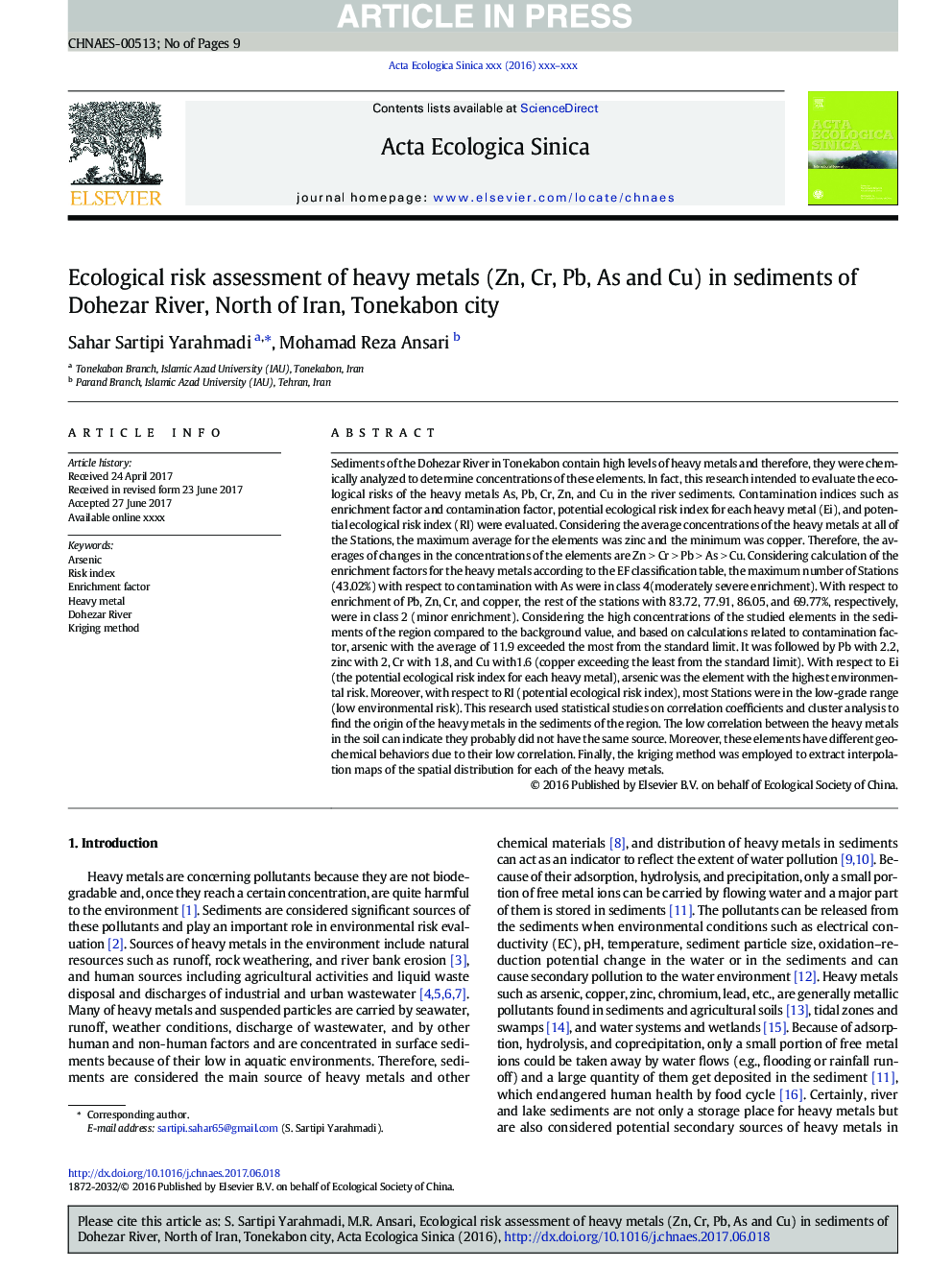| Article ID | Journal | Published Year | Pages | File Type |
|---|---|---|---|---|
| 8846314 | Acta Ecologica Sinica | 2018 | 9 Pages |
Abstract
Sediments of the Dohezar River in Tonekabon contain high levels of heavy metals and therefore, they were chemically analyzed to determine concentrations of these elements. In fact, this research intended to evaluate the ecological risks of the heavy metals As, Pb, Cr, Zn, and Cu in the river sediments. Contamination indices such as enrichment factor and contamination factor, potential ecological risk index for each heavy metal (Ei), and potential ecological risk index (RI) were evaluated. Considering the average concentrations of the heavy metals at all of the Stations, the maximum average for the elements was zinc and the minimum was copper. Therefore, the averages of changes in the concentrations of the elements are Zn > Cr > Pb > As > Cu. Considering calculation of the enrichment factors for the heavy metals according to the EF classification table, the maximum number of Stations (43.02%) with respect to contamination with As were in class 4(moderately severe enrichment). With respect to enrichment of Pb, Zn, Cr, and copper, the rest of the stations with 83.72, 77.91, 86.05, and 69.77%, respectively, were in class 2 (minor enrichment). Considering the high concentrations of the studied elements in the sediments of the region compared to the background value, and based on calculations related to contamination factor, arsenic with the average of 11.9 exceeded the most from the standard limit. It was followed by Pb with 2.2, zinc with 2, Cr with 1.8, and Cu with1.6 (copper exceeding the least from the standard limit). With respect to Ei (the potential ecological risk index for each heavy metal), arsenic was the element with the highest environmental risk. Moreover, with respect to RI (potential ecological risk index), most Stations were in the low-grade range (low environmental risk). This research used statistical studies on correlation coefficients and cluster analysis to find the origin of the heavy metals in the sediments of the region. The low correlation between the heavy metals in the soil can indicate they probably did not have the same source. Moreover, these elements have different geochemical behaviors due to their low correlation. Finally, the kriging method was employed to extract interpolation maps of the spatial distribution for each of the heavy metals.
Related Topics
Life Sciences
Agricultural and Biological Sciences
Ecology, Evolution, Behavior and Systematics
Authors
Sahar Sartipi Yarahmadi, Mohamad Reza Ansari,
